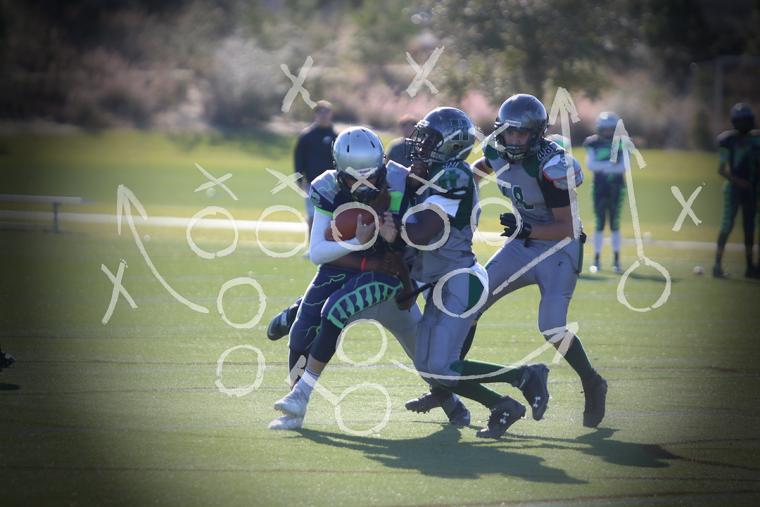
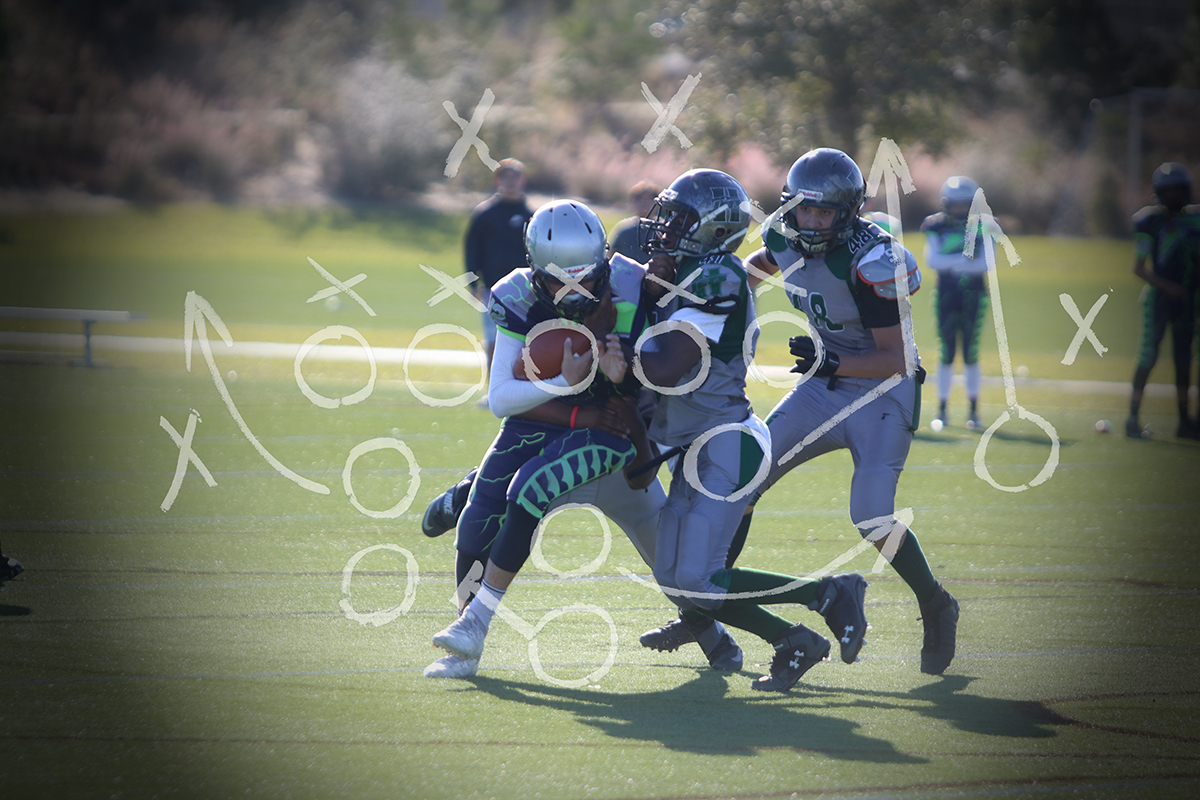
Football is offered starting for ages six and under and goes up to 14 and under; in other words, athletes who do not yet have high school experience. Boys’ as well as girls’ football programs are available. Three football championships are offered per year: the AAU League Based National Championships (this year held in early December in Orlando, Florida), the AAU Unrestricted National Championships (also in early December and this year held in Georgetown, Texas) and the AAU West Coast National Championships, (this year held in late December in Los Angeles).
Keith Noll, national chair of AAU’s football program, spent some time discussing the sport as well as AAU’s initiatives to keep players safe, happy and thriving.
There has been a lot in the news recently about concussions. What effect has it had on youth football?
Last year, we really saw the results of parents’ concerns about the concussion issue. In fact, we heard people talking about a 25 to 30 percent drop in football registration. We saw maybe an 8 to 9 percent drop at AAU.
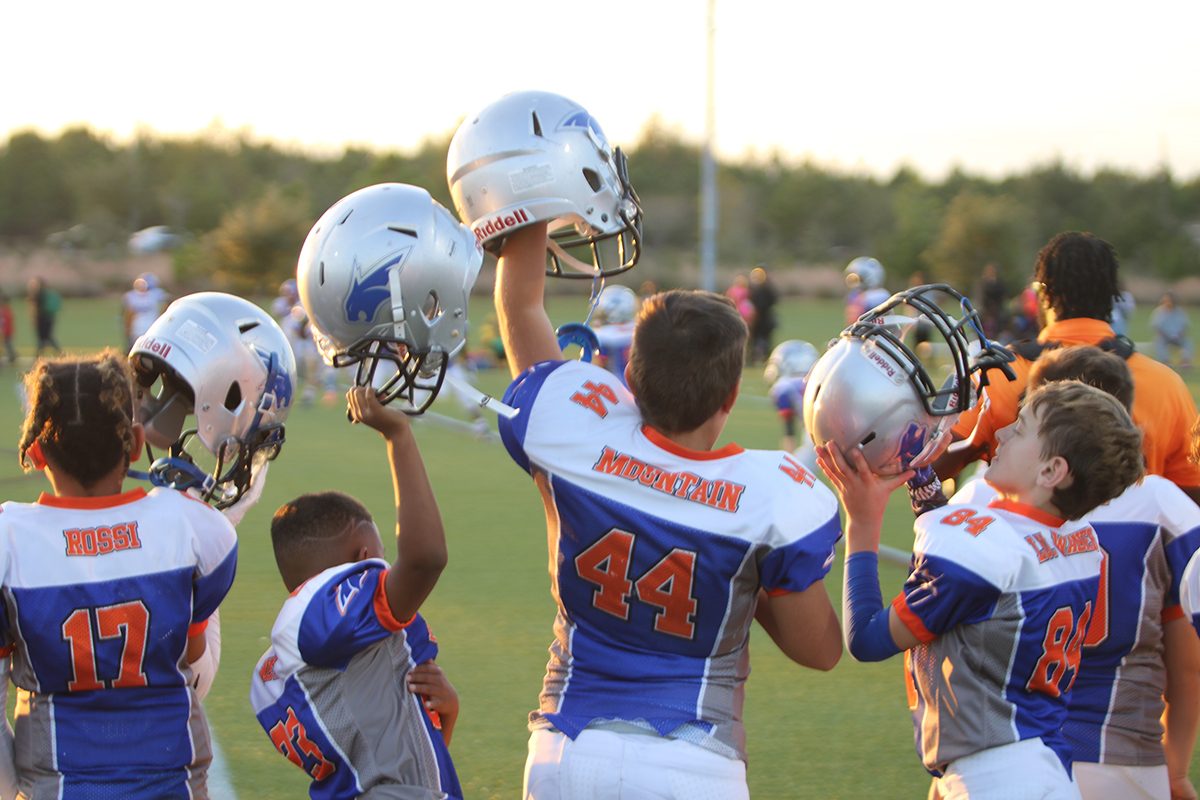 Obviously, parents are concerned. What has AAU done to try to help with that?
Obviously, parents are concerned. What has AAU done to try to help with that?
We as a group took USA Football’s National Practice Guidelines for Tackle Football and made them mandatory for all our programs. I would say a percentage of our groups were doing that anyway, but we are using them as our standard.
Note: Youth tackle football practice guidelines from USA Football include clear definitions of contact as well as time limits on player-to-player full contact and are the first to earn the endorsement of the NFL.
What kind of a response is AAU seeing?
I think it’s positive; we are seeing more kids coming back to play. We’re up across the board, not just in boys’ tackle football but in girls’ football and in flag football and in cheer. It’s important that the parents understand what we’re doing. This is a sport that really needs a lot of oversight. Kids need to be taught to tackle properly, not to use their heads. And when kids are playing in an unsafe manner, it’s not just about a referee throwing a flag; it’s a matter of seeing that if a kid gets X number of penalties, he’s out of the game. If he doesn’t shape up, he’s out for the season. People might think that’s a tough line, but the truth is that you have to send the message. If you don’t send that message, you’re going to run into all sorts of problems. I think if you want to consider yourself the gold standard, you have to take things seriously and put safety first and foremost.
It sounds like AAU wants to try to make not just athletes and coaches, but parents accountable as well.
It’s hard for coaches and referees because some of the sport’s biggest problems come from out of control parents. All it takes is for one or two people to show up at a game and start acting like knuckleheads. Every year, there are a few who wind up being banned from coming to games because they can’t behave. And let’s face it, when you’re out of control and you’re around eight- or ten- or twelve-year-old kids, you have a problem. I feel like the vast majority of people – coaches and parents – take this very seriously. And I think as a result, the kids have a lot more fun playing the sport.
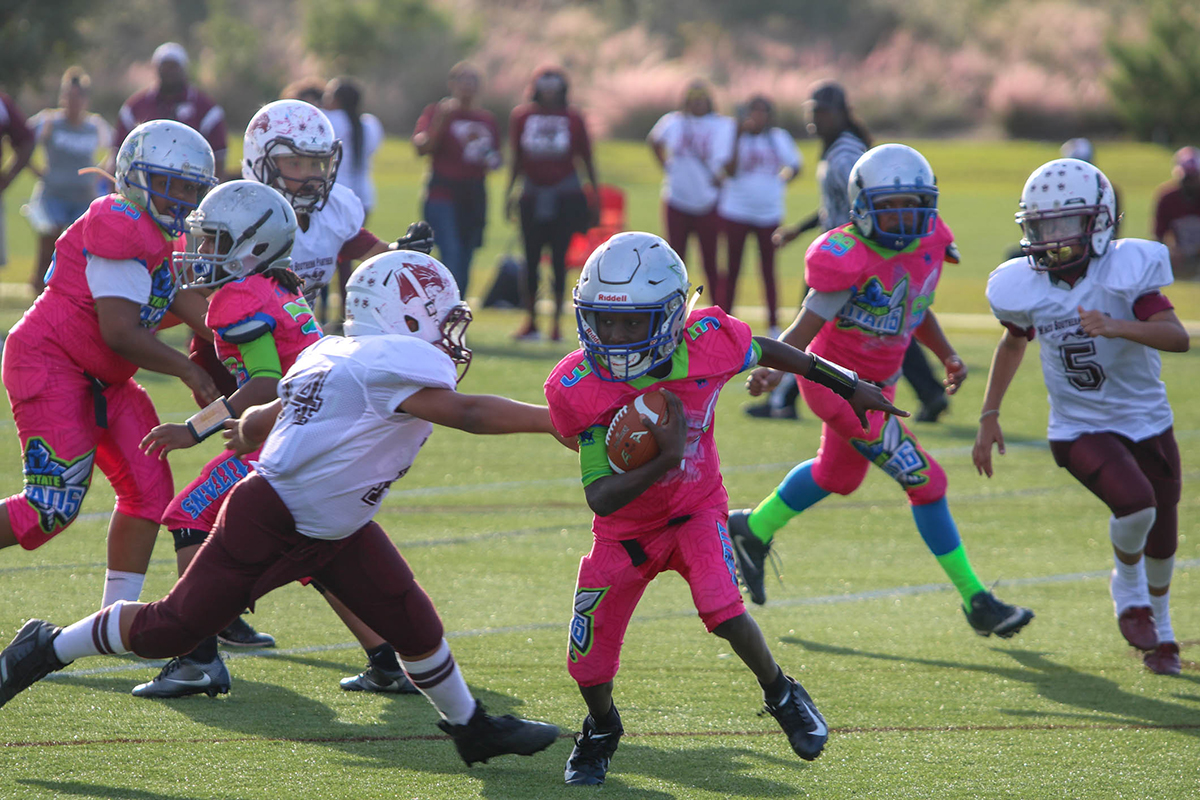 AAU offers programs for girls who want to play football. Is that popular?
AAU offers programs for girls who want to play football. Is that popular?
We have had girls’ football for a handful of years now, and enrollment goes up a little each year. We have never heard one bad thing about it from either a coach or a player so apparently, they’re having a great time.
Flag football is also held by AAU. Did that pick up registration because of the concussion concerns?
We saw it go up initially, and that was really interesting to us. Across the country, a lot of people started moving their kids away from sports like hockey or football because they were worried about them. But now, I think they’re coming back, especially since we’re getting news about companies developing helmets that are 25 to 40 percent better at protecting your head. That has taken away a lot of the concerns for parents. We hear reports about states or areas where they’re trying to pass a ban on football for kids 12 and under but I don’t think any of those efforts have gone anywhere.
What kind of medical support does AAU recommend having on the sidelines for football?
We have a number of programs where coaches or others who are volunteering with the program happen to have medical training – maybe they’re doctors or nurses or athletic trainers or EMTs in their full-time jobs – but we don’t make it a rule. A lot of our programs are held in the inner city and it’s not going to be possible for those programs to afford to pay a professional to stand on the sidelines for every practice and every game. But being in an urban center means that there’s usually a hospital or a clinic nearby in case something happens, and we always advise people to call 9-1-1 if they are concerned something is serious. Don’t get me wrong; we’d like nothing better than to say, ‘We provide medical personnel at every single practice and game,’ but that’s a pipe dream in this economy. The only exception is at our championships; we do have EMTs on staff there.
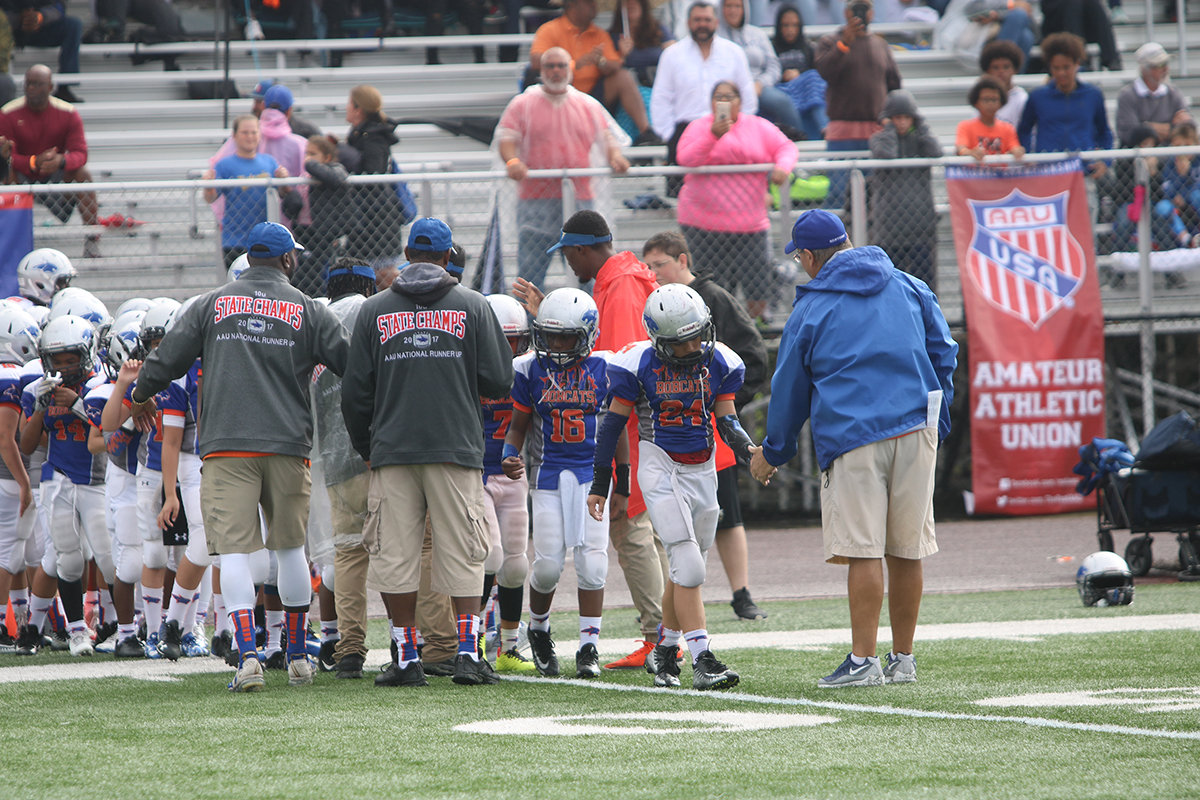 Something we have really been paying attention to is the time kids spend in the heat. We have really cut back on the amount of practices they can do outside. USA Football’s guidelines also cover the number of minutes pads/contact per week that kids get. We may not be able to legislate morality, but we can legislate safety.
Something we have really been paying attention to is the time kids spend in the heat. We have really cut back on the amount of practices they can do outside. USA Football’s guidelines also cover the number of minutes pads/contact per week that kids get. We may not be able to legislate morality, but we can legislate safety.
I think we’ve done a lot to try to keep the game safe for the ages of the players. We’ve taken away the kickoff when the kids are eight and under; we’ve also shortened the games, so they don’t overplay. You have to strike a balance between keeping it fun for them and keeping it safe for them.
Something we also have to remember is that the parents are paying for their kids to travel to championship games and many times, it’s pretty expensive if the kids are playing longer games and the family has to stay an extra day or two and the parents have to take that extra time off work. We took it into consideration because we have a big urban population that plays, and the parents just can’t afford that much travel – they can’t afford to pay for hotels and they can’t afford to be taking extra vacation days they’re not getting paid for. We want to give the kids an opportunity to go to a national championship without it being any more expensive than it has to. There’s no perfect format so you’re trying to balance the needs of the families and the teams.
AAU’s focus isn’t on preparing players for college scholarships or pro careers; it’s about providing the opportunity to play.
We just want to get them started in the sport and teach them to play it safely and have fun. If they’re as good as some of their parents think they are, they’re going to end up in the right high-profile camps and they’ll be noticed. We just want them to be happy. If they are, we’ve done our job. SDM

